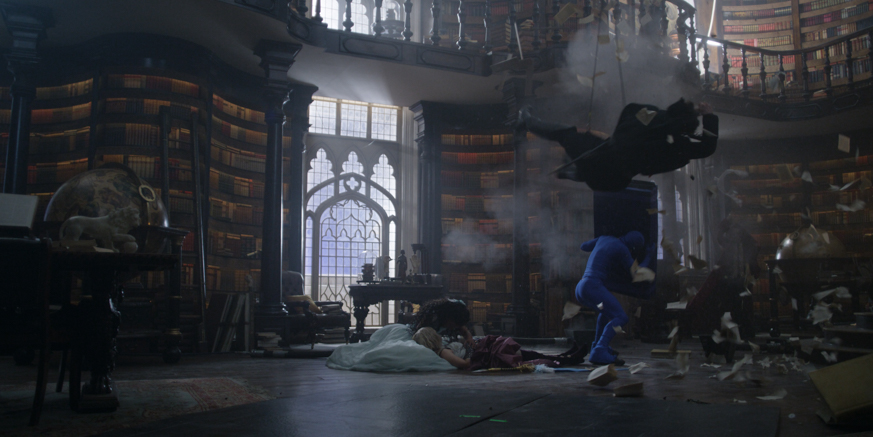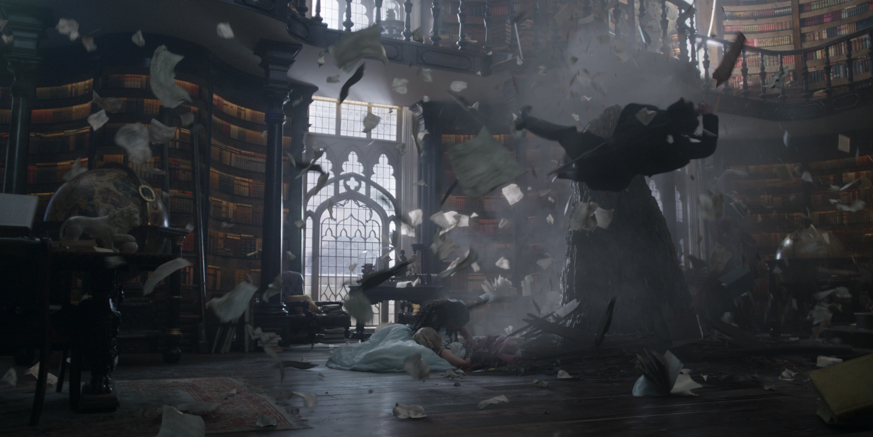The School for Good and Evil Case Study
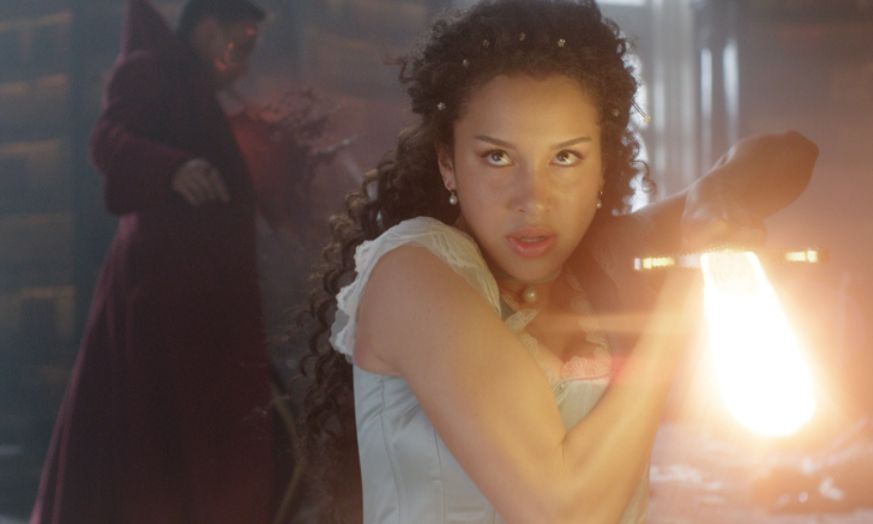
Case Study
For Paul Feig’s 'The School for Good and Evil', Image Engine conjured up a grimoire of fantastical effects. Whether creating fanged flowers or bringing pumpkin scarecrows to life, the studio’s goal remained singular: make the unreal feel real.
View portfolio page Watch our breakdown reelBased on the 2013 young adult novel of the same name, The School for Good and Evil sees Netflix conjure up an enchanting new world. We follow Sophie and Agatha, a pair of misfit besties spirited away to the school of the title, where “Evers” and “Nevers” are tutored to become fairy tale heroes or villains respectively. Sophie and Agatha’s bond is put to the test when one is sent to the School for Good and the other to Evil. It doesn’t help matters that a blood feud between the school’s founders, Rhian and Rafal, threatens to further separate Sophie and Agatha as they walk their separate paths.
Of course, no story of schools, fairy tales, and magic is complete without its fair share of creatures and sorcery. Image Engine supplied that in spades for The School for Good and Evil, delivering 365 shots packed full of its digital character and FX expertise.
“Make-believe is often the most difficult thing to achieve in VFX,” begins Christian Irles, visual effects supervisor at Image Engine. “We pushed that challenge even further on The School for Good and Evil, as we wanted even the most fantastical imagery to look photoreal”.
“Whether creating a scarecrow come to life, a person transforming into a bird, or flowers with snapping, fang-lined mouths, we strove to anchor the effect in reality by adding all the imperfections and details that exist in nature. The challenge was to make the audience believe in our characters and FX, both in terms of performance and the visual representation on screen.”
Good and evil collide
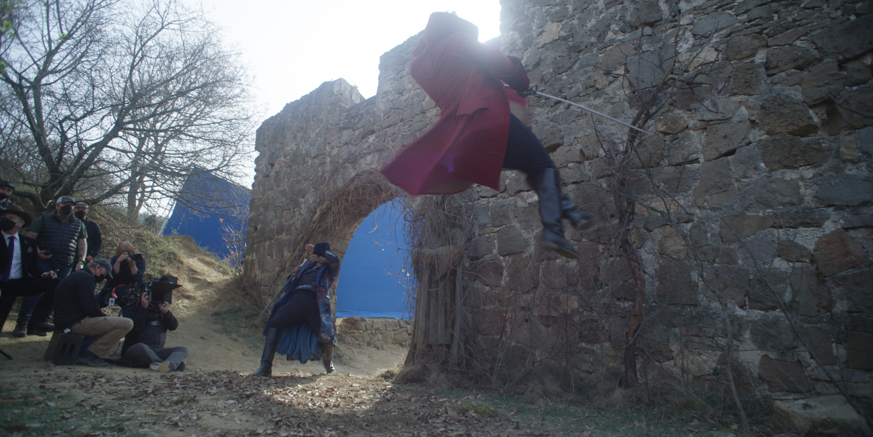
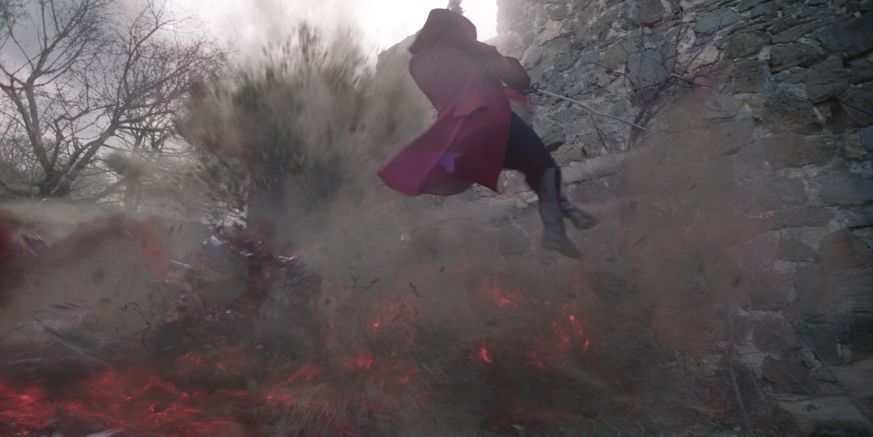

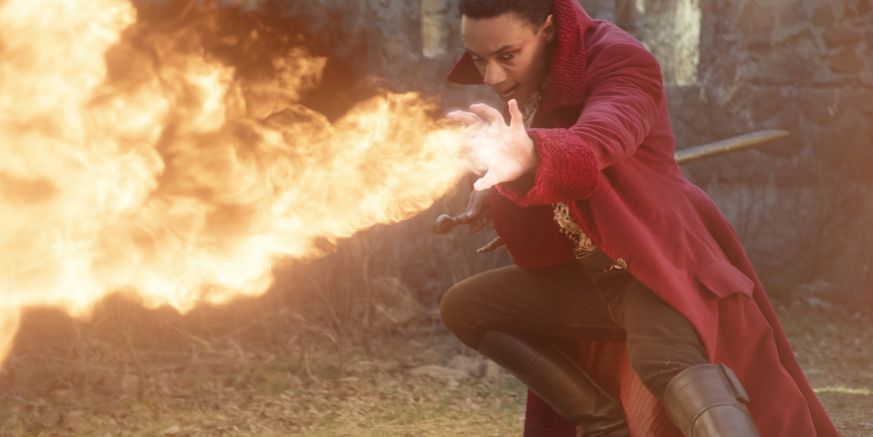
The School for Good and Evil kicks off with a battle between twin brothers Rafal and Rhian (both played by Kit Young) as they clash amid the fractured ramparts of an ancient castle. The pair whirls in mid-air amid swarming blasts of dark blood magic, hurling spells that cause stones to erupt from the ground or send immense cones of blazing fire from their hands.
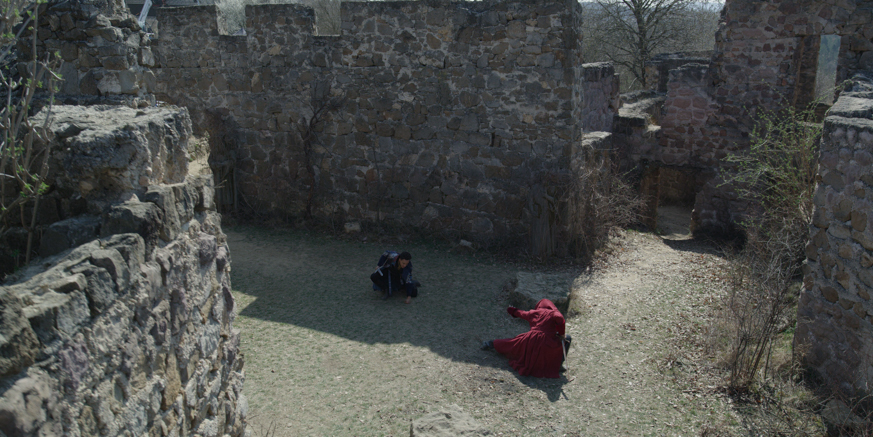
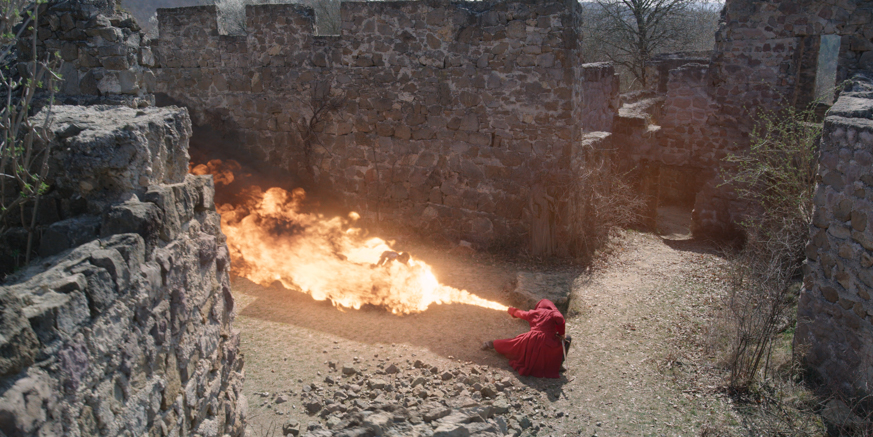
“The fire was indeed a tough effect, as it’s so up close in camera!” says Yuta Shimizu, CG supervisor. “Thankfully, our FX team has created so many digital fires over the years that they had a great setup on which we could base the effect. Getting the specific look we wanted for The School for Good and Evil still took time, but thanks to our past efforts at Image Engine, we could get there without a huge hustle and spend more time perfecting the right look for this show.”
The twins’ confrontation comes to a head when Rafal pins Rhian to a vertical wall and then launches on feet first, the force of his impact tearing the wall from its foundations and flipping horizontally. “There were several moving pieces at play for this sequence,” says Jenn Taylor, animation supervisor on the project and associate VFX supervisor at Image Engine. “On set, we had a rock set piece driven by the stunt team, which could rotate from vertical to horizontal, with the actors playing Rhian and Rafal held with wires. We needed to reduce the sharp impact of the rock landing horizontally, as well as the reverberation on the actors, to create the sense the rock was floating.
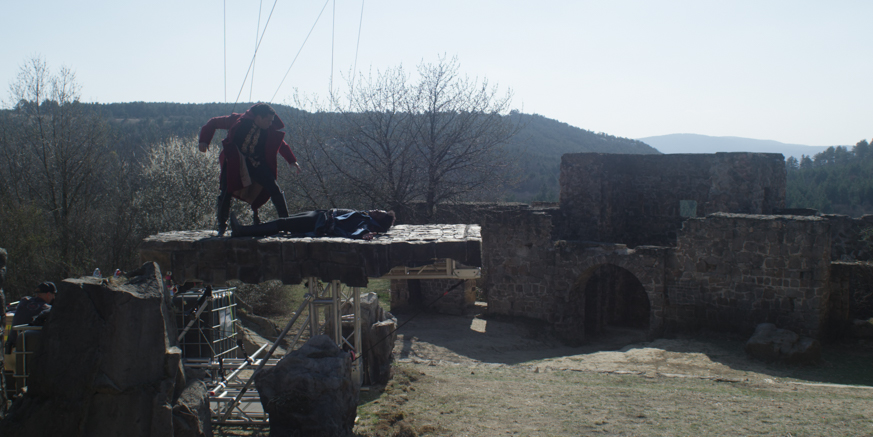
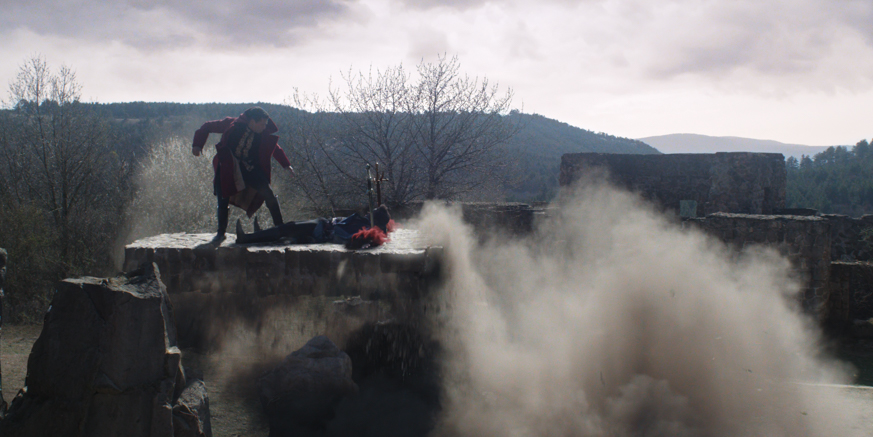
“We replaced the wall with our CG prop and roto-animated it along with both of our actors. Through the B side of the shot, we adjusted the motion of the rock and the constrained CG characters. Those CG characters then gave positional and speed re-time guidance to our compositing team, who adjusted the character elements into place to follow the new CG rock performance. Our DMP (digital matte painting) and background prep teams did a great job cleaning up the additional set pieces to give us the final magical floating rock!”
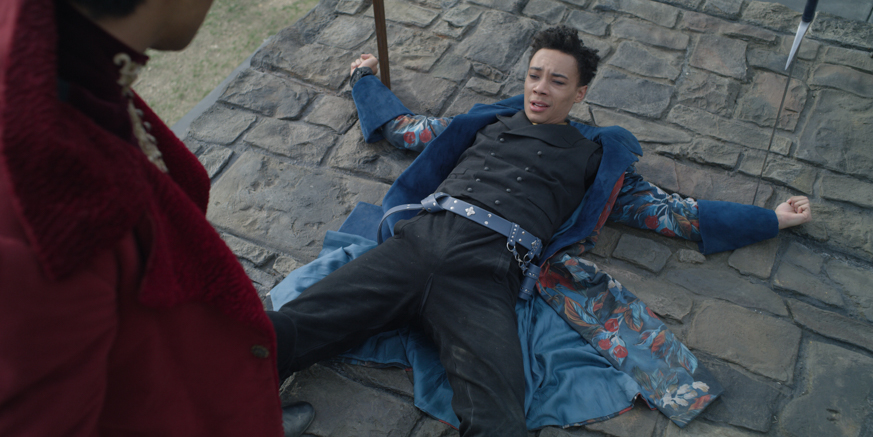
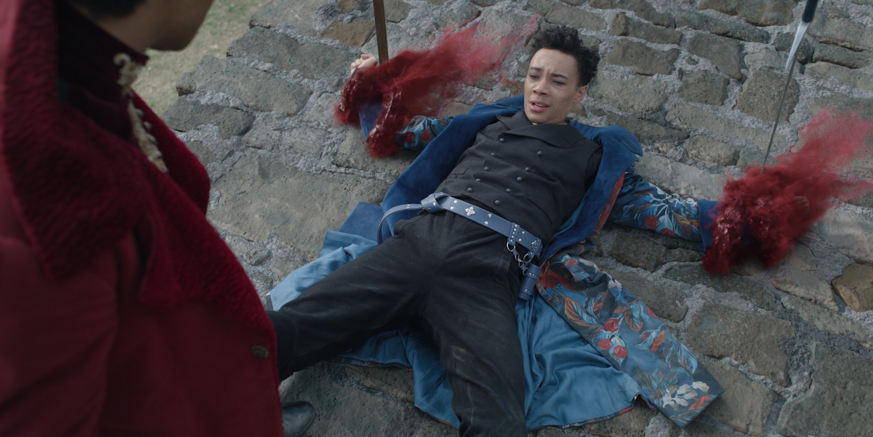
At this point, Rafal has Rhian pinned. Then, in a final, stunning shot, he floats into the air as a pair of dark, flowing wings suffused with blood magic emanate from his back as he prepares to end his brother’s life.
“The blood magic wings were, without doubt, the hardest part of the sequence,” says Yuta. “The idea for this shot was formed when Julia Flanagan, our animation lead, did a rough sketch of timings. She drew an excellent wing shape formed with blood magic to illustrate another power, and it got all of us excited! So we decided to go for it. We generated many different looks with FX to see what worked the best for the wing’s aesthetic, starting with pure liquid, moving to slower, thicker liquid, and finally mixing the look with blood mist. Through experimentation and dialling into what we knew would work, we found a look perfect for The School for Good and Evil.”
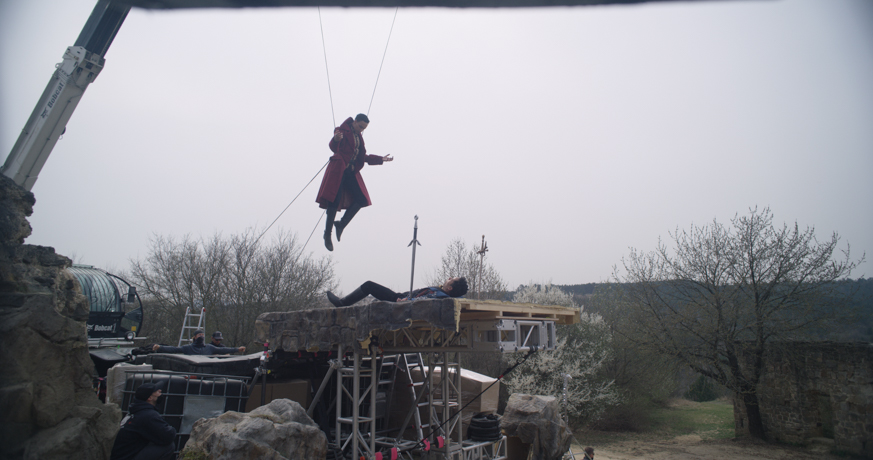
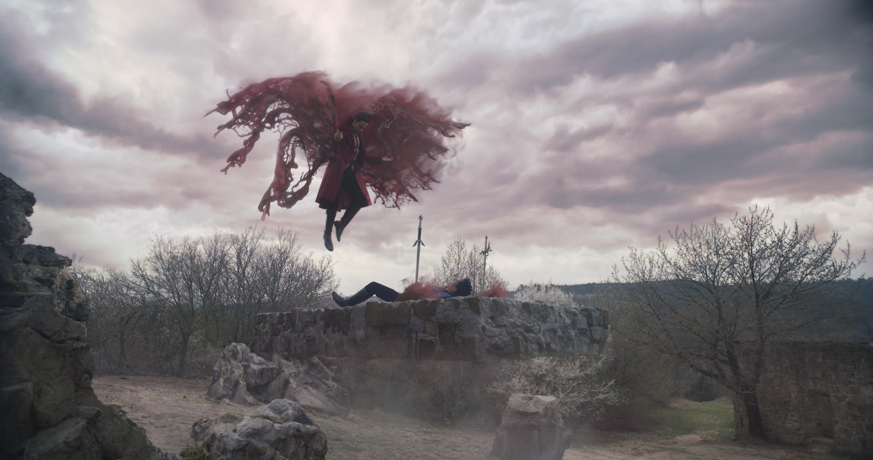
A turn-up for the books
The School for Good and Evil isn’t necessarily a safe place to be – another fight erupts later in the film in the schoolmaster’s library when Rafal attacks Agatha, and Sophie is hurt trying to protect her friend. At this point, Rafal’s face is a map of raw scar tissue, his wounds glowing with baleful red energy.
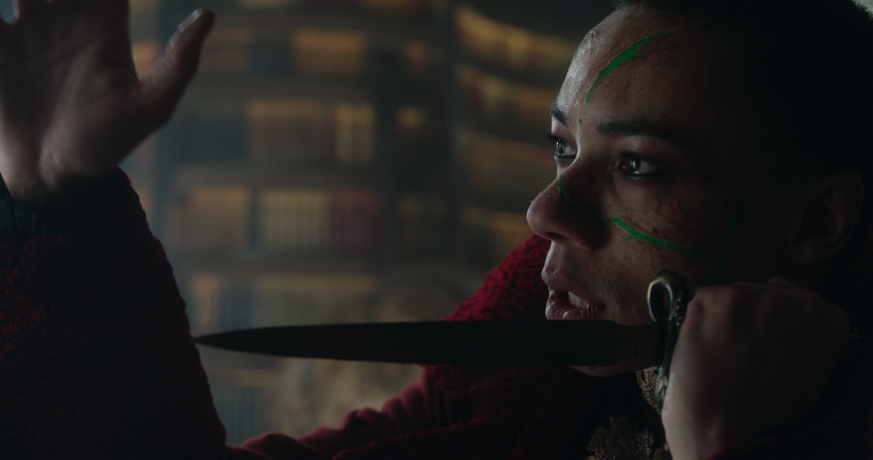
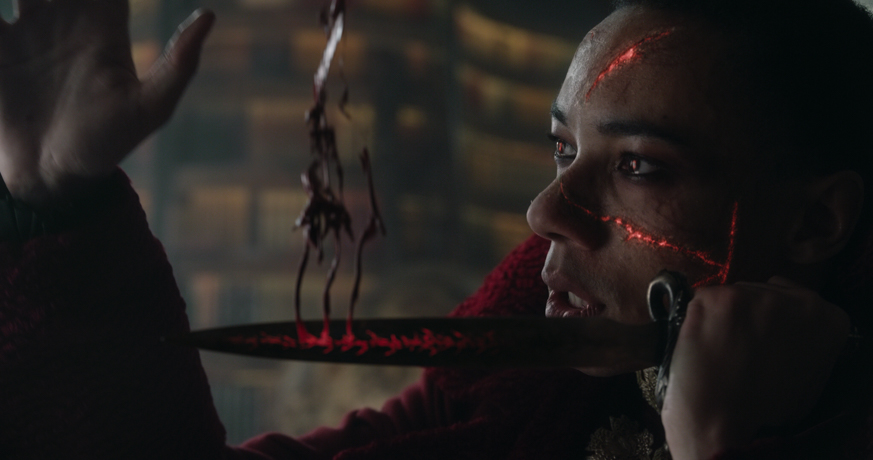

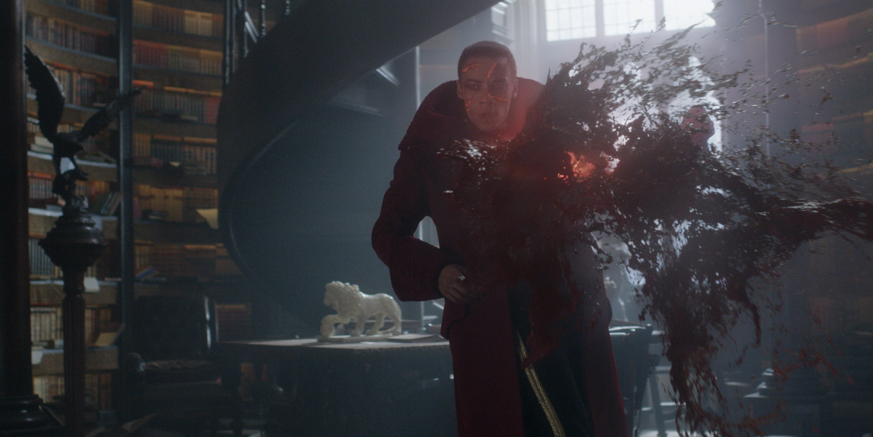
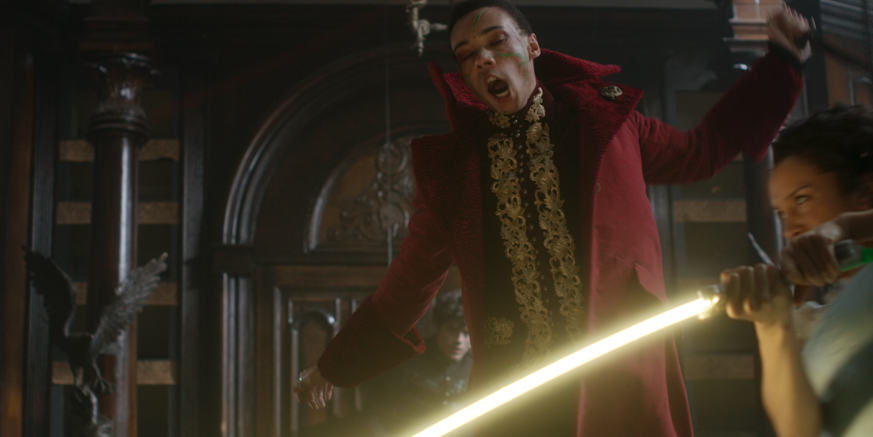
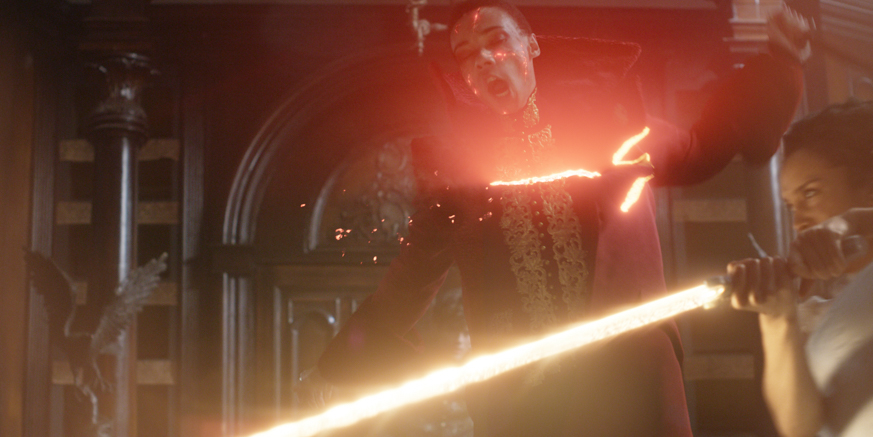
“Kit was filmed using prosthetic scars. Our mandate was to enhance them by adding lava inside the scars and affecting the surrounding skin accordingly,” says Christian. “The face treatment was handled by the compositing team, including matchmove and rotomation tasks using KeenTools. We added subtle translucency near and around the edges of the scars to sit properly in the lava. We also applied a slightly burned look to the scar edges for integration and added drama.”
During the battle, Rafal attacks his fellow combatants amid a tornado of flying paper and violent sorcery. At one point, a claw-like obelisk explodes through the floorboards, sending wizards, paper, and shattered flooring flying through the air.
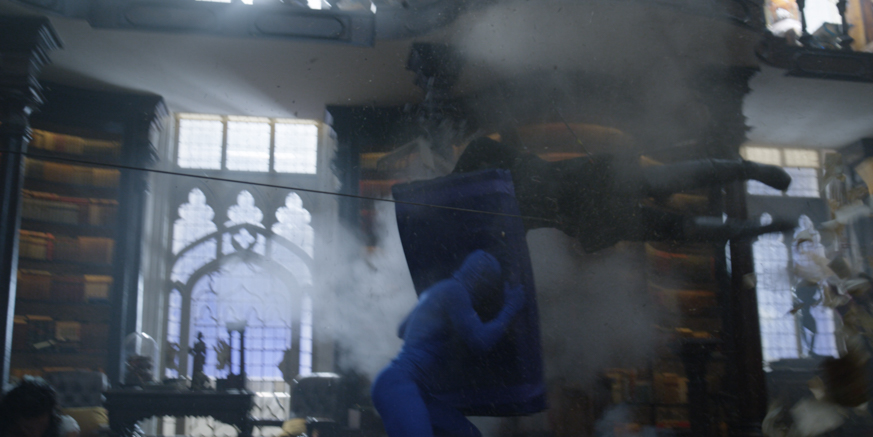
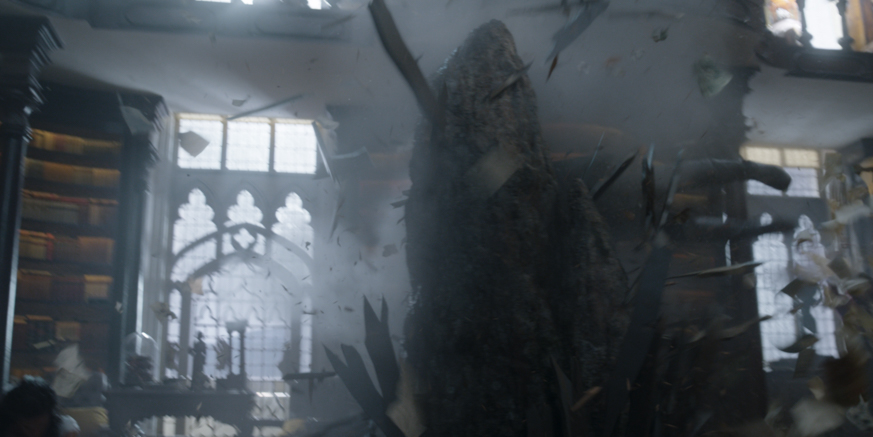
“The shot of the stone breaking through the floor evolved a lot as we worked on it,” explains Yuta. “There was a lot of FX and most of the ground was replaced, so the contacts, reflections, and shadows all lined up. Carefully, we blended everything in as we were replacing what was captured on set, which can quickly make things look CG – especially when adding things like so much paper with backlighting. We spent a lot of time perfecting our lookdev and shaders to ensure they worked well and gave this scene extra realism – and, as an extension, extra drama!
“The shot ended up with so many layers. Props go out to Rob Richardson, lead FX TD on the project and now FX supervisor at Image Engine, who did an excellent job keeping the data footprint light so we would iterate faster to nail the look we wanted to deliver.”
Feed me, Seymour!
Even the flora in The School for Good and Evil isn’t to be trusted. In one sequence, Sophie must navigate a field of seemingly harmless plant life that harbours a deadly secret. “At first sight, the flowers look like ordinary, inanimate, pink flowers,” says Christian. “However, if you got too close to them, they’d show their true colours, or should I say their sharp fangs!”
Image Engine brought these carnivorous flowers to life while ensuring the digital bouquets matched the look and feel of those featured in plate photography. “The challenge we faced was matching original photography to make the bushes and flowers look plausible,” says Christian. “This was particularly challenging, given the field of flowers appeared both in day and night scenes, so the complexity of assets, lighting and integration was effectively doubled. Regardless, our team did a fantastic job.”
Image Engine created close-up shots of the clacking flowers bearing their petal-lined jaws and snapping at the flesh of those who wander too close. The studio also created shots that showed not just one bush but an entire thicket of flesh-eating buds.
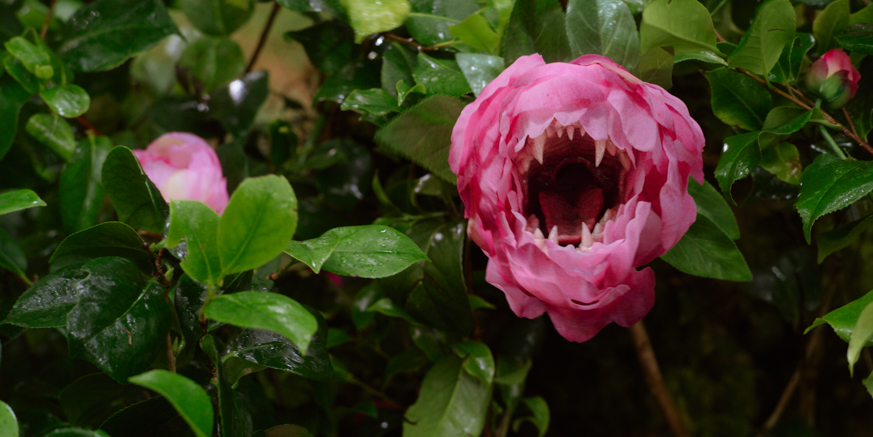
“The field of clacking flowers was procedurally generated, for the most part, but we also had some shots or sections of shots into which we hand-placed bush and flower to ensure their unique animations occurred in the right moment,” says Yuta. “One of the cool things we did with these bushes was to semi-automate them to shake off their leaves. This effect was possible thanks to our ever-evolving Gaffer tool. With Gaffer, we could check for the area that should shake and automatically add orientations to the points on which we instance the leaves. So, whenever an animator caches the bush and renders, Gaffer automatically added the shakes to add motion to the images.”
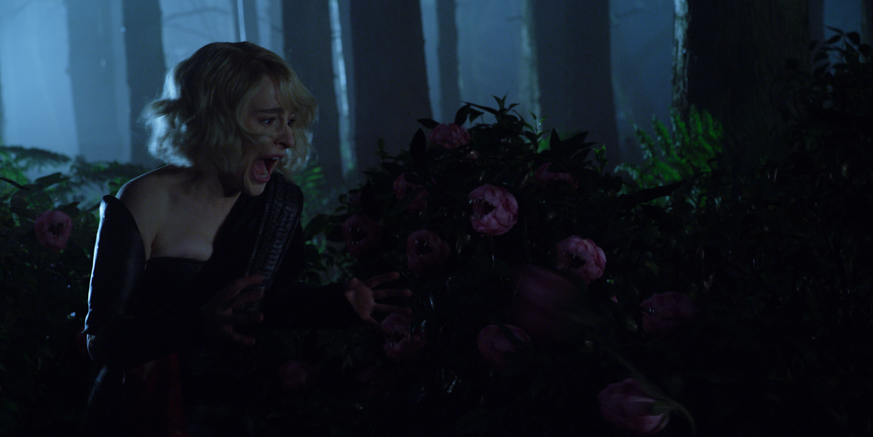
Don’t fear the Reaper
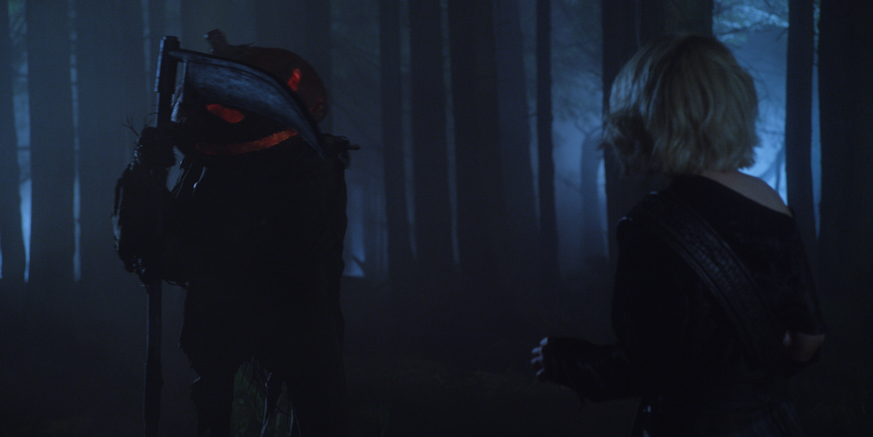
In another example of vegetation coming to life, Jamie Flatters’ character, Tedros, battles a jack-o-lantern-headed scarecrow under the pale light of a midnight moon. Hopping on just one leg/stake, the creature – known as a Reaper – swings its large-bladed scythe, clashing with Tedros’ own light-imbued blade.
On set, the Reaper was portrayed by a stunt performer. However, to enhance the Reaper’s performance with otherwise impossible physicality, Image Engine removed the stunt performer from plate photography across most shots, either replacing him with a CG counterpart or adding the CG pumpkin head for shots where he remained in camera. “Our cloth simulation, lighting, and compositing integration had to be spot on,” says Christian. “I’d like to give a special mention to our roto/paint and DMP departments, who painted out the practical Reaper, which was no easy task in itself!”
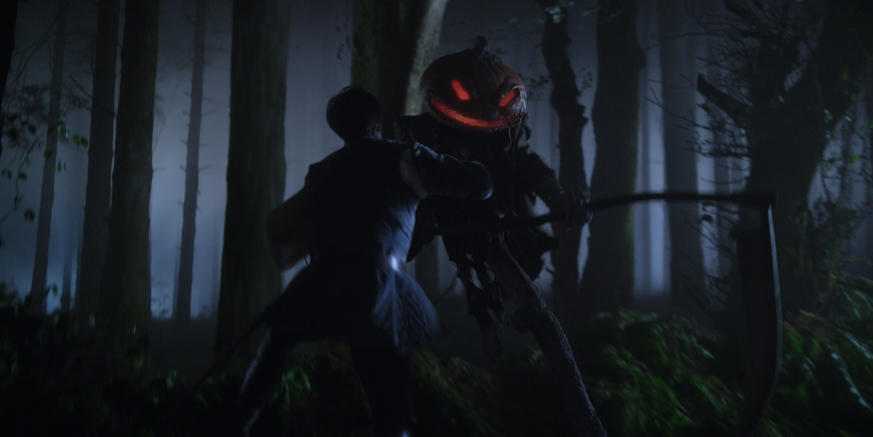
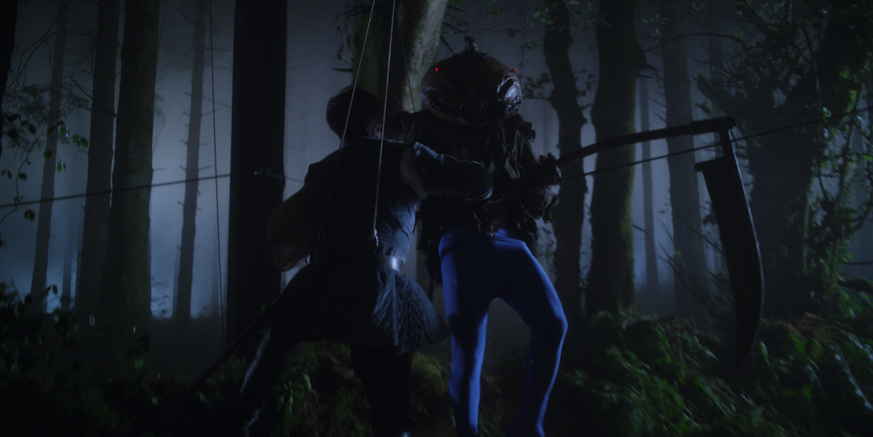
“The Reaper was a fun character to animate,” adds Jenn. “We made several challenging (and entertaining) video recordings of ourselves trying to develop ‘walk’, ‘run’, and fighting techniques that made sense with a single point of balance, along with the assistance of the Reaper’s scythe. Along with the incredibly useful stunt performer, whose actions in the plate photography also drove several performances, this process helped us understand how to animate the Reaper. My favourite moments to animate were when the Reaper uses his planted scythe to raise himself upside down and attacks Tedros with the bottom of his stump, as well as the creepy beat where he falls forwards and crawls rapidly towards the camera.”
Tedros ends the fight by cleaving his sword through the Reaper’s neck, causing the creature to explode in chunks of vegetation and ribbons of clothing, which shower down around the remaining stump.
“This was, for the most part, a full CG beat with DMP projected backgrounds,” explains Jenn. “The cadence of the explosion was first to decapitate the Reaper, which led to a chain effect of destroying his essence: we blew up his pumpkin head, followed by the explosion of his body, scattering straw and Reaper bits around, leaving nothing but his stump behind.”
Before passing animation blocking to FX, Image Engine mocked up versions of the explosion in comp using a live-action Reaper dummy the production blew up. “This was presented for ‘explosion’ timing purposes,” says Christian. “Once the production approved these mock-ups, we handed them over to FX; they had a perfect reference to match to in terms of timings and the look of the explosion, i.e., bits of wood, straw, and so forth flying everywhere.
“We lit all of the FX to match live-action photography, helping to anchor the CG to the scene,” continues Christian. “Our Compositing department then took the lighting renders to the next level by ensuring colour, focus, depth cueing, lens flaring/artifacts and layering were accounted for.”
Animal magic
Several times throughout The School for Good and Evil, characters swoop into a room in animal guise, then quickly transmogrify into their human selves – or vice versa. The CG transitions are fast yet elegant and seamlessly convey the transformation in the blink of an eye.
“The human-to-animal and vice versa transmogrification shots were tricky to accomplish,” says Christian. “As with all work across the show, the challenge lay in making something impossible look credible. Nailing the animation and cloth simulation was half the battle. The other half was lighting our characters to match their practical counterparts and for our compositing team to make the transition invisible to the naked eye.”
“From an animation perspective, these shots were quite tricky,” adds Jenn. “We looked for interesting ways to seamlessly blend one character into another of a completely different size. In pre-production, we experimented with 2D draw-overs to see how we could use cloth and motion to tie the transformation together; it was a useful technique to sell the idea. We had our characters spin into and out of the transmogrifications and added strategically posed wings and bodies to give us an interesting motion that would drive the cloth to conceal the takeovers.”
The pen is mightier than the sword
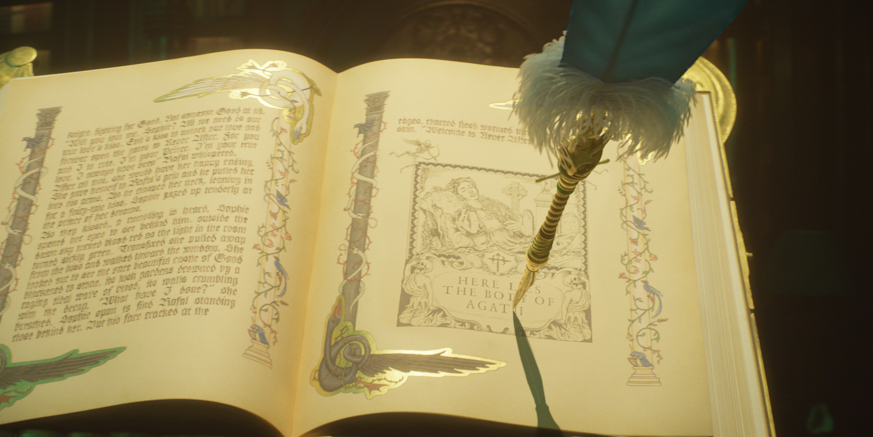
Another of Image Engine’s major deliveries was The Storian – one of the school’s ancient artifacts, responsible for writing down the fairy tales in Endless Woods. In The School for Good and Evil, the Storian is represented as an ornately decorated golden quill with a huge, splayed feather. The pen is seen in several shots writing of its own accord in a large, elaborately furnished book. Image Engine created both assets along with the inked illustrations and script that flow from the Storian’s nib.
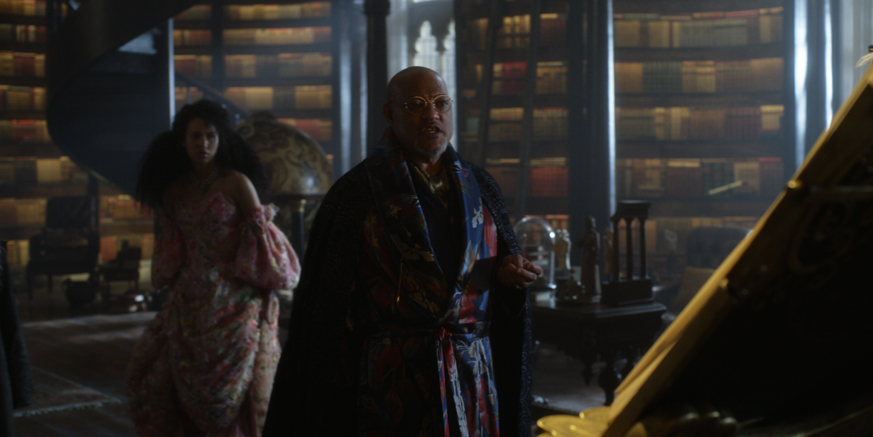
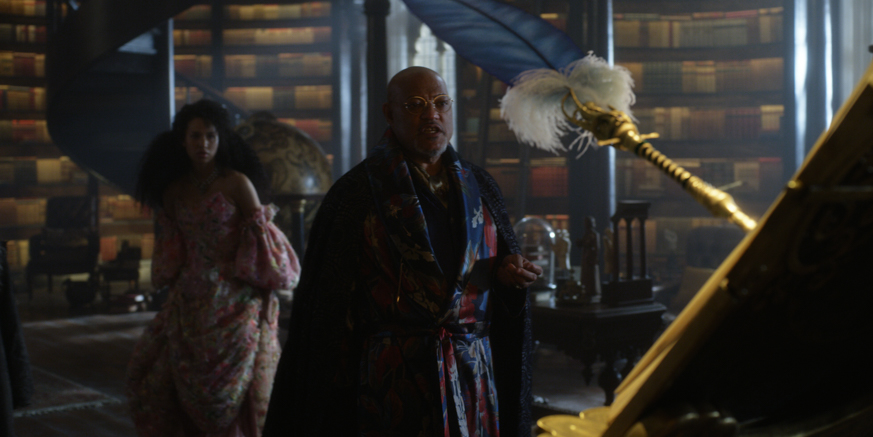
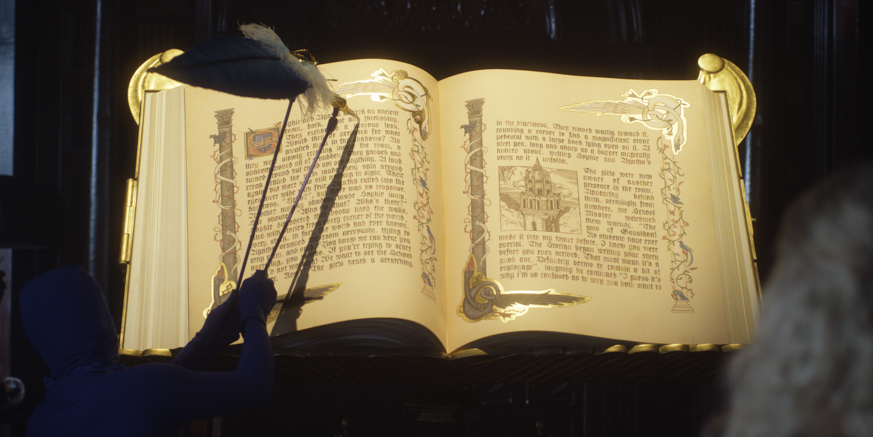

“The Storian Pen is a combination of practical and CG,” says Christian. “The asset needed to look identical to the practical Storian, with perfect lighting and compositing integration. What made this particularly challenging was the Storian’s reflective nature, given that it’s predominantly made of gold. To achieve a proper match between live action and CG and make the CG pen reflections look accurate, our lighting department reprojected on-set HDRIs onto 2.5D geometry of the entire Schoolmaster’s library.”
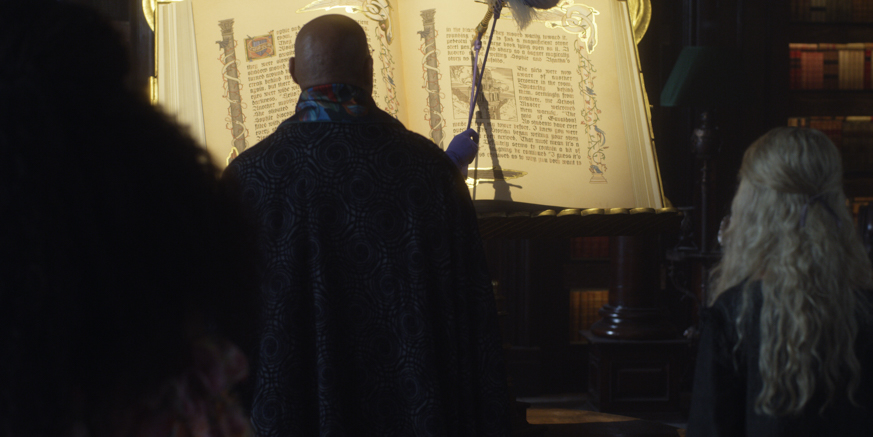
Striving for perfection
Whether creating self-writing quills, deadly blood magic, plants with a taste for human flesh, or deadly, scythe-wielding scarecrows, Image Engine’s goal remained resolute through every shot: striving for realism.
“Overall, we were able to deliver a consistently high level of photorealism across a unique scope of work that brought fantasy and magic to life in a dark fairytale world,” concludes Christian. “I’m exceedingly proud of the level of realism we achieved, especially considering the diversity of the work. Everyone across the entire Image Engine team came together in a concerted team effort and delivered exceptional work.”


